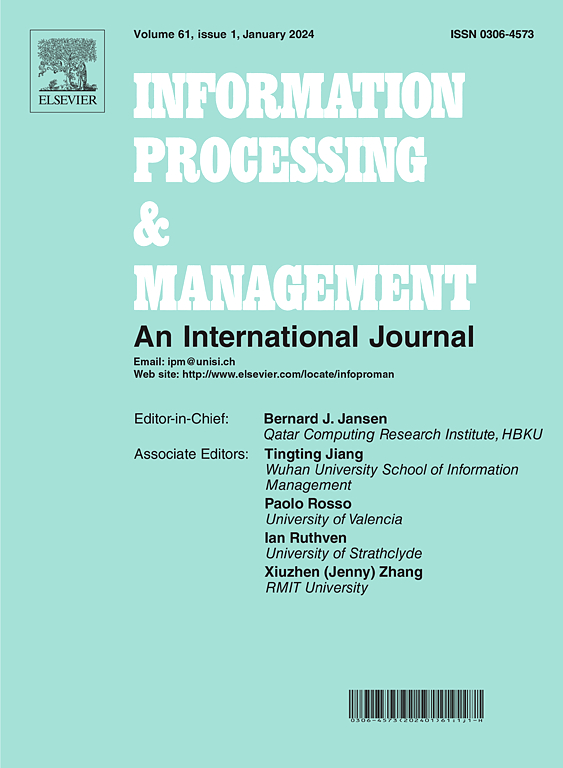长时跨古典汉语的非同步语言模型
IF 7.4
1区 管理学
Q1 COMPUTER SCIENCE, INFORMATION SYSTEMS
引用次数: 0
摘要
中国古典文学有着数千年的悠久历史,是历史和人文研究的宝贵资源。以往的古汉语模型在语义理解方面取得了重大进展。然而,它们在很大程度上忽视了语言在不同历史时期的动态演变。在本文中,我们介绍了一种为古典中文文本量身定制的新型非同步预训练语言模型。该模型采用基于时间的转换器架构,可捕捉语义随时间的持续演变。此外,它还能巧妙地平衡上下文和时间信息,最大限度地减少因时间相关输入过多而产生的语义歧义。我们开发了一个高质量的古汉语异时语料库用于训练。该语料库的时间跨度从先秦到清代,包含多种体裁。我们在一个著名的古汉语词义消歧数据集上添加了额外的时间注释,从而验证了其有效性。结果表明,我们的模型在辨析不同历史时期的古汉语词义方面具有一流的性能。我们的研究有助于语言学家从庞大的语料库中快速掌握不同时期的语义变化程度1。本文章由计算机程序翻译,如有差异,请以英文原文为准。
A diachronic language model for long-time span classical Chinese
Classical Chinese literature, with its long history spanning thousands of years, serves as an invaluable resource for historical and humanistic studies. Previous classical Chinese language models have achieved significant progress in semantic understanding. However, they largely neglected the dynamic evolution of language across different historical eras. In this paper, we introduce a novel diachronic pre-trained language model tailored for classical Chinese texts. This model utilizes a time-based transformer architecture that captures the continuous evolution of semantics over time. Moreover, it adeptly balances the contextual and temporal information, minimizing semantic ambiguities from excessive time-related inputs. A high-quality diachronic corpus for classical Chinese is developed for training. This corpus spans from the pre-Qin dynasty to the Qing dynasty and includes a diverse array of genres. We validate its effectiveness by enriching a well-known classical Chinese word sense disambiguation dataset with additional temporal annotations. The results demonstrate the state-of-the-art performance of our model in discerning classical Chinese word meanings across different historical periods. Our research helps linguists to rapidly grasp the extent of semantic changes across different periods from vast corpora.1
求助全文
通过发布文献求助,成功后即可免费获取论文全文。
去求助
来源期刊

Information Processing & Management
工程技术-计算机:信息系统
CiteScore
17.00
自引率
11.60%
发文量
276
审稿时长
39 days
期刊介绍:
Information Processing and Management is dedicated to publishing cutting-edge original research at the convergence of computing and information science. Our scope encompasses theory, methods, and applications across various domains, including advertising, business, health, information science, information technology marketing, and social computing.
We aim to cater to the interests of both primary researchers and practitioners by offering an effective platform for the timely dissemination of advanced and topical issues in this interdisciplinary field. The journal places particular emphasis on original research articles, research survey articles, research method articles, and articles addressing critical applications of research. Join us in advancing knowledge and innovation at the intersection of computing and information science.
 求助内容:
求助内容: 应助结果提醒方式:
应助结果提醒方式:


